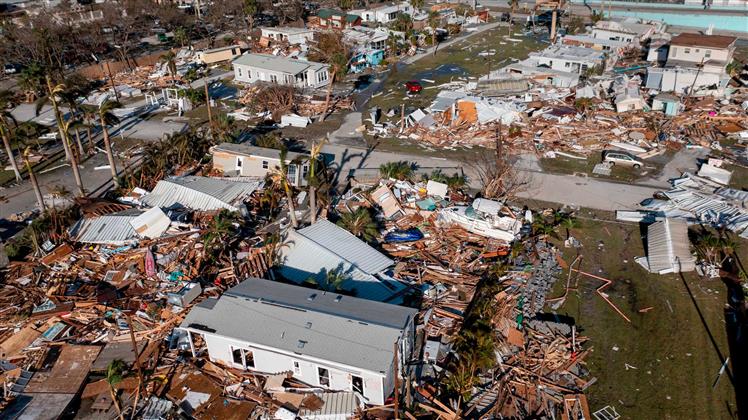The death toll in the region amounts to 120, most of them in Lee County, just where citizens estimate that the evacuation order took more than a day despite warnings from US meteorologists that it would suffer ‘potentially fatal’ flooding.
County Manager Roger Desjarlais said they considered calling for an evacuation sooner than was ultimately issued, “but given the uncertainty of the trajectory, the timing didn’t seem right.”
What finally convinced local officials to order people to leave, just hours before the tropical organism’s arrival, was the shift in its track to the south and east, he said.
By then, in Sanibel, Fort Myers Beach and other areas, many people decided to stay in their homes.
‘When the cyclone began to move north in the computer models, the evacuation was issued, the shelters were opened,’ Governor Ron DeSantis defended himself after being questioned by journalists.
But when his justification arrived, the population of Lee had already suffered the scourge of a category 4 hurricane on the Saffir-Simpson scale (out of five), with sustained winds of 240 kilometers per hour and a diameter of over 600 kilometers.
Now, its effects are also expected to financially ruin countless people whose homes were not covered by flood insurance when the storm flooded the region with powerful storm surges and torrential downpours.
According to an analysis by the Politico newspaper’s E&E News website, the federal government’s National Flood Insurance Program, the dominant source of flood coverage in the United States, protects only a small fraction of homeowners.
The text added that Ian’s net damage was unusually extended when the hurricane brought storm surge to coastal areas and caused river overflows and flash flooding in inland Florida, where almost no one has insurance against such events.
President Joe Biden declared nine counties as disaster areas, giving residents the ability to receive federal help to pay for minor home repairs, access to short-term housing and other emergency costs.
Yet of the 1.8 million households in those nine territories, only 29 percent have federal flood insurance, according to an analysis of government records by E&E News.
So, that leaves one million 300 thousand homes in ground zero without coverage of any kind, he added.
In Hardee County, which has one of the lowest income levels of any locality in Florida and 44 percent of its residents are Hispanic, only 100 families out of 8,000 have federal flood insurance, or a coverage rate of 1.3 percent.
‘Ian could financially ruin thousands of families in Florida. There’s no better way to say it,’ concluded Mark Friedlander of the Insurance Information Institute.
The latter center estimates that Ian caused at least $30 billion in damage, making it the 12th costliest disaster in the United States since 1980, according to records from the National Oceanic and Atmospheric Administration.
However, the tragedies caused by the phenomenon are far from over.
Volusia County on Florida’s Atlantic coast, for example, still faces the ongoing threat of flash flooding, as there is still a lot of standing water in the community that has nowhere to go.
“The rain from the hurricane will cause levels along the Saint Johns River to remain high as water drains into the basin,” the Weather Service reported in a flood warning a few hours ago.
ef/oda/ifs










